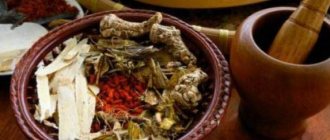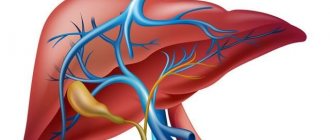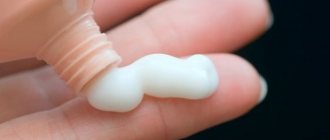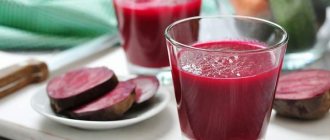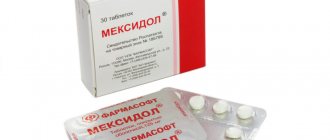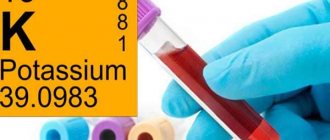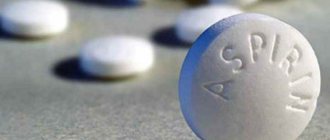There is a lot of confusion surrounding the effect of tea on the cardiovascular system (CVS).
This is due to the fact that, firstly, medicine itself has not fully answered questions about the effects of tea on the cardiovascular system, and secondly, its popularizers do not always correctly present information about the effects on the body.
For example, it is impossible to say unambiguously whether strong black tea is good for hypotensive people, because it depends not only on a person’s blood pressure, but also on many other factors. It is also impossible to say that green tea is always indicated for hypertension.
Thus, one study indicates that strong tea (both black and green) increases blood pressure in the short term.
Other studies (, ) indicate that regular and moderate consumption of both types of tea reduces blood pressure in the long term.
In this article we will try to understand all these subtleties.
Impact on blood vessels of 7 different types of drink
Classic tea is considered a drink made from raw materials obtained from the tea bush. Although tea is called both flower and herbal infusions, and such specific plants as mate or rooibos.
Depending on their specificity and processing, different teas have different properties and have different effects on blood vessels, heart and brain. Find out below which drink dilates blood vessels the most.
Green
Any tea contains alkaloids, minerals and vitamins, which at different times of brewing and consumption have different effects on blood pressure, blood vessels and the brain.
In this case, the vessels of the brain and abdominal cavity may narrow, and the vessels located in the muscles, including the coronary vessels, may expand. And vice versa. This has led to confusion regarding the effect of tea on blood vessels.
The most famous alkaloid is caffeine. It causes an increase in blood pressure, tones well, and improves brain activity. Green tea has much more caffeine than black tea. Therefore, the theory arose that green tea is beneficial for hypotension. Is it so?
Indeed, green tea narrows the lumens of the arteries, raises blood pressure and invigorates in general, relieves headaches, as it narrows and tones the walls of the blood vessels in the brain.
But this effect does not last long , because other alkaloids begin to act: theobromine, xanthine, nofilin, paraxanthine, hypoxanthine. They reduce the tone of blood vessels in the brain, lowering blood pressure. At the same time, the hypotensive person’s head begins to hurt again.
An incorrectly oriented patient who does not control his blood pressure, especially if the body is prone to pressure surges, may mistake a headache from spasms of cerebral vessels during hypertension for pain from hypotension and brew himself strong green tea. As a result, a hypertensive patient, before receiving a decrease in pressure, provokes a hypertensive crisis in himself.
Thus, green tea is more suitable not for hypotensive people, but for hypertensive people . But on one condition: it should not be too strong.
In addition to toning the body and reducing high blood pressure, this drink has several other beneficial properties.
- Antisclerotic effect. It not only lowers cholesterol levels in the blood, but can also dissolve cholesterol plaques on the walls of arteries, and also make blood vessels more elastic. For more information about which teas will cleanse blood vessels, see a separate article.
- Protective properties. Protects against cancer, improves immunity and is a natural antioxidant.
- A remedy against excess weight. With regular use, it improves metabolism and can be regarded as a means for weight loss. But it has a cumulative effect. In order to lose weight and thereby facilitate the functioning of blood vessels and the heart for a long time, it is consumed weakly at least three times a day after meals. But using it for the purpose of losing weight is possible only without sweets and adding milk.
It is better to abstain from the drink in case of acute gastritis, gastrointestinal ulcers, heartburn, abdominal colic and stomach pain of any etiology.
Green tea contains much more vitamin C than citrus fruits, four times more vitamin P, and six times more carotene than carrots.
The technology for its preparation consists of lightly drying for a short time, heat treatment, during which all fermentation processes completely stop, and rolling the leaves. The leaves are given the most bizarre shape, and the more tightly the leaves are curled, the stronger the drink will be.
It is brewed with 60-80 degree water 2 to 6 times.
Black
Black tea in the first phase also increases blood pressure and tones all systems. And at the second stage it works differently than green.
Since black is fermented much more strongly, vitamins B, P and PP are preserved in its leaves. They help stabilize blood pressure after caffeine wears off. Therefore, the drink is very suitable for hypotensive people, although it does not raise blood pressure as quickly as the green one.
Black tea has another property that is beneficial for hearts: the quercetin it contains prevents the formation of blood clots in blood vessels. This is a big plus. But it can also be harmful if a lot of the drink is consumed in parallel with blood thinning drugs.
He also:
- reduces the amount of “bad” cholesterol;
- reduces the likelihood of stroke by 60-70%;
- improves brain performance, increases concentration;
- in a weak form, it stabilizes blood pressure and relieves pressure surges.
Those with stomach ulcers should not drink strong black tea. It can worsen inflammation of the mucous membrane and cause bleeding.
The fermentation process is long and multi-stage, it depends on the type of tea bush. It is brewed with water up to 90 degrees, has the largest amount of substances that are beneficial for blood vessels, but requires the greatest attention to brewing technology.
White
The name comes from the type of raw material, which consists of buds and young leaves covered with fine white hairs. Some drink lovers believe that it is the healthiest because it is almost not fermented, it is only slightly dried in the sun and then dried in the shade.
for the cardiovascular system because:
- strengthens the walls of blood vessels, therefore it is especially useful for women with varicose veins;
- prevents cancer, including those of the cardiovascular and circulatory systems;
- strengthens the immune system and preserves youth, since in terms of antioxidant content it is 4 times superior to orange juice.
Yellow
The drink turns out to be strong, quickly raising the tone, with a very subtle, delicate aroma. Like black tea, yellow tea raises blood pressure and is therefore recommended for hypertensive patients.
It can be recognized by the reflection in a white porcelain cup: green tea will have a yellowish or greenish tint, and yellow tea will have a pinkish tint.
Refers to weakly fermented. It takes 72 hours to prepare: first, the dense, juicy, yellowish, small buds of the tea bush are dried over coals, then for slow fermentation they are wrapped in parchment - during this time the white fibers are destroyed. Brew with water 60-70 degrees.
Oolong
Oolong has the properties of both green and black teas in relation to vessels, but the taste characteristics of this drink are richer than those of others. The effect on the lumen of the arteries is, by and large, neutral.
It is a semi-fermented drink, between green and black. The preparation of the raw material takes place in several stages: first, it is dried for about an hour, then it is placed on bamboo baking sheets and turned from time to time so that the leaves slightly oxidize and change color in places, then they are calcined several times in turn over an open fire, cooled, rolled up and calcined again.
Pu Er
This drink narrows the lumen of the arteries and increases blood pressure even more than black. Contraindicated in hypertension.
Heavily fermented, it has pronounced taste characteristics and a strong effect on the body. It is brewed only with boiling water, in special ways.
This is due to the fact that fermentation occurs not only for a long time, but also after pressing. Currently, additional fermentation methods are also used, since in modern consumer conditions Pu Er does not have time to ripen after pressing.
Also check out the infographic:
Does green tea neutralize “radiation” from your computer?
On the Internet you can find many references to the fact that green tea neutralizes the harm of “radioactive” radiation from a computer or TV.
Over the years, scientific studies have been conducted in which they tried to evaluate whether green tea, for example, neutralizes the negative effects of various radiations: from ultraviolet radiation to the consequences of radiation therapy for cancer patients.
Firstly, the research results turned out, as often happens, contradictory (but it is already clear that tea cannot
); secondly, computers, like any electrical device, emit electromagnetic radiation (EMR), but not radioactive!
There are only a few studies regarding electromagnetic radiation. Yes, small
The work of Chinese scientists reports that green tea can protect against EMR, but they cannot explain how the protective mechanism works, and there are questions about the study: in the experiment, nerve cells treated with polyphenols from a test tube were irradiated. This can hardly be compared with the effect in a living organism.
What does strength affect?
Black tea gains its strength on average 5 minutes after the start of brewing, green tea - after 7 minutes. At this moment, teas have the best aroma and taste. Later, the drink becomes not stronger, but richer in color, but loses the properties that fully characterize the strength: essential oils evaporate, vitamins decompose, etc.
At the moment of its highest strength, tea has the greatest effect on the blood vessels of the brain and heart.
Sometimes a strong drink helps improve the condition. For example, strongly brewed black tea for headaches and low blood pressure will relieve spasms, raise blood pressure and prevent it from falling again.
But a large amount of strong green tea, even in a hypotensive person, can immediately cause unpleasant symptoms:
- problems with the thyroid gland;
- strong heartbeat;
- trembling of hands and feet;
- sleep disorders.
Therefore, it is strongly advisable to brew only black tea and only if we are talking about hypotensive people who do not experience sudden surges in pressure. But a medium-strength drink will help him just as well, without giving any side effects.
Any weak tea can bring down elevated body temperature. A strong one should never be used for this: on the contrary, it increases the heat.
How hot should it be?
The optimal temperature for drinking is considered to be around 56 degrees. Being hotter, it provokes malignant formations of the throat and stomach; if it is overcooled, it reduces its healing properties.
However, in culture, for example, American civilization, it is practically not customary to drink this drink hot.
Eastern traditions suggest that the more fermented the tea, the hotter it should be consumed: otherwise it is tasteless and does not provide any beneficial effect.
Accordingly, white and green teas can be drunk even cold , if such consumption is comfortable. Provided they are chilled but fresh.
Interesting Facts
Experts say that green tea contains even more caffeine than natural brewed coffee. The exact composition depends on the size of the leaves (the smaller they are, the more caffeine) and the brewing temperature: the hotter the water, the more caffeine in the cup.
Therefore, if the goal is to tone the body and raise blood pressure, then green tea is even preferable.
But if you need to bring a person into a cheerful state, but he is prone to jumps in blood pressure , then it is better to choose not coffee or green tea, but black. In it, caffeine acts more mildly, thanks to tannins. But even in this case, you need to observe the measure in terms of strength and quantity drunk.
For more information on the benefits of coffee for the heart and blood vessels, see a separate article.
It is believed that, depending on health and age, it is safe to consume 4-8 cups of a properly brewed drink.
Does green tea help against cancer?
Catechins are also credited with unprecedented antioxidant properties that can protect the body from the effects of free radicals - molecules that damage healthy cells, due to which they can mutate, turn into cancerous ones and give rise to cancer.
However, firstly, the occurrence of cancer is a complex and difficult to explain process, and it is unlikely that its cause can be reduced to an insufficient amount of antioxidants. Secondly, everything in the body is too complex for us to say that antioxidants are an absolute good and free radicals are an absolute evil. Thus, the latter can destroy both healthy and malignant cells in the body. And antioxidants can ward off free radicals in both cases, says a study published
in the journal Science.
The Cochrane Library has twice conducted
analysis of scientific papers that assessed the connection between green tea and cancer prevention. In 2009, works were analyzed, the total number of subjects was 1.6 million people. Then experts found the research results contradictory and did not allow us to conclude that green tea really protects against cancer. By 2021, data had accumulated from an additional million people, but the conclusions remained the same: the effect of green tea on cancer prevention has not been proven, and if it does exist, it is insignificant.
